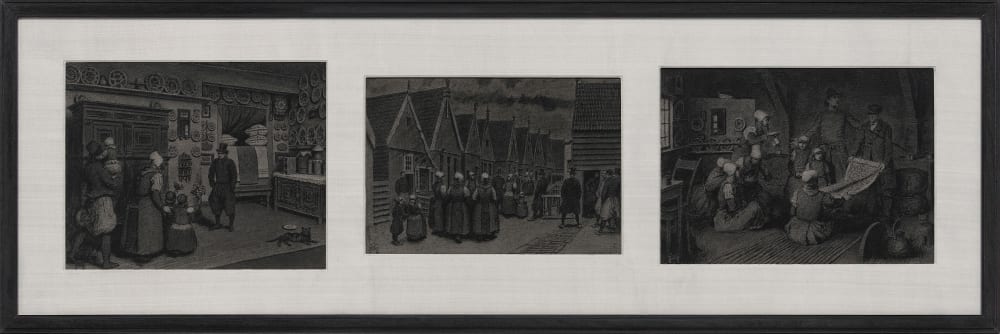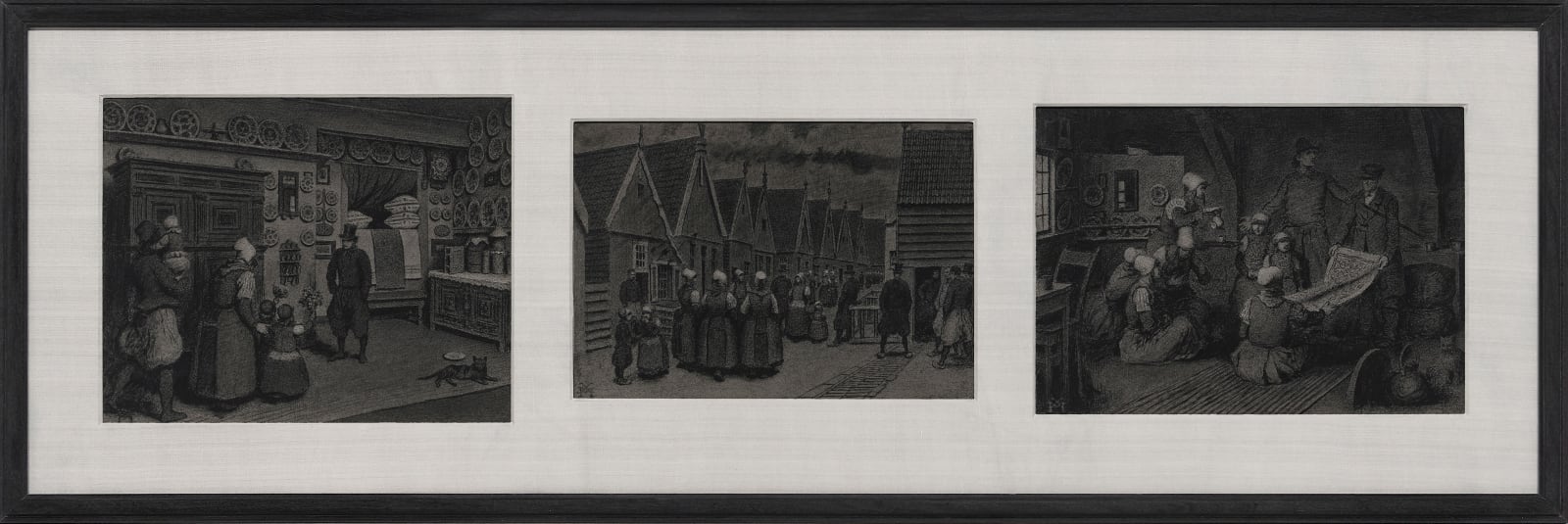Xavier Mellery (1845-1921)
10¼ x 12¾ inches (26 x 32.5 cm)
10 x 13½ inches (25.3 x 34.5 cm)
The painter, draftsman and illustrator Xavier Mellery is considered a precursor of Belgian Symbolism. During his academic years Mellery committed himself to the study of nature, antiquities and historical composition, for which he won the Prix de Rome in 1870. Spellbound by the many fresco’s he encountered in Italy, he aspired to create a peinture d’idées without abandoning realism: this would become his lifelong artistic goal and the basis of his symbolist work. His involvement in the Salon Pour l’Art and Les XX, and contact with Octave Maus and Émile Verhaeren, confirm his contribution to the symbolist movement.
When Charles de Coster invited Mellery in 1878 to produce illustrations for his Isle of Marken, it propelled his artistic output towards the Naturalistic movement of the Belgian avant-garde. Similar in spirit to the neo-gothic style of Bruges, the traditional costumes worn by the isolated islanders of Marken were based on sixteenth century fashion. Although there is different garb for the different seasons, for weddings and funerals, in general the clothing is egalitarian in that the entire community wears the same, making no distinction between the fishermen and the elite.
Marken was to Mellery what Brittany was to Gauguin: a lost paradise. Mellery’s year-long stay on
the island represented a turning point in his career: distancing himself from his academic training, he introduced ideas of social conditions, heredity and environment as inescapable forces in shaping human character. Portraying the inner life of things, the meditative silence, achieved through the use of a restricted palette, Mellery veils the mundane of everyday life as mysterious and enigmatic.
Mellery’s use of the triptych - the religious format par excellence - was a manner of sacralizing the art presented. Often used by his fellow symbolists, for secular subjects including landscapes, a trio certainly lending gravitas to even the smallest of drawings. Quick sketches of inhabitants on the island now populate a familar interior in the first drawing. Although the cohesion between the three drawings is perhaps ambiguous, it does give a sense of the daily life at Marken. The monochrome black haze surrounding the composition, contributes to its mysterious and intuitive feeling that is the seed for the Symbolist movement.
Provenance
Galerie Patrick Derom, BrusselsPrivate collection, Brussels
Galerie Ronny van de Velde, Brussels
Private collection, New York
Exhibitions
Amsterdam, Van Gogh Museum, Xavier Mellery: De ziel der dingen, 14 April – 2 July 2000
Brussels, Musée d’Ixelles, Xavier Mellery: L’âme des choses, 27 July – 8 October 2000




